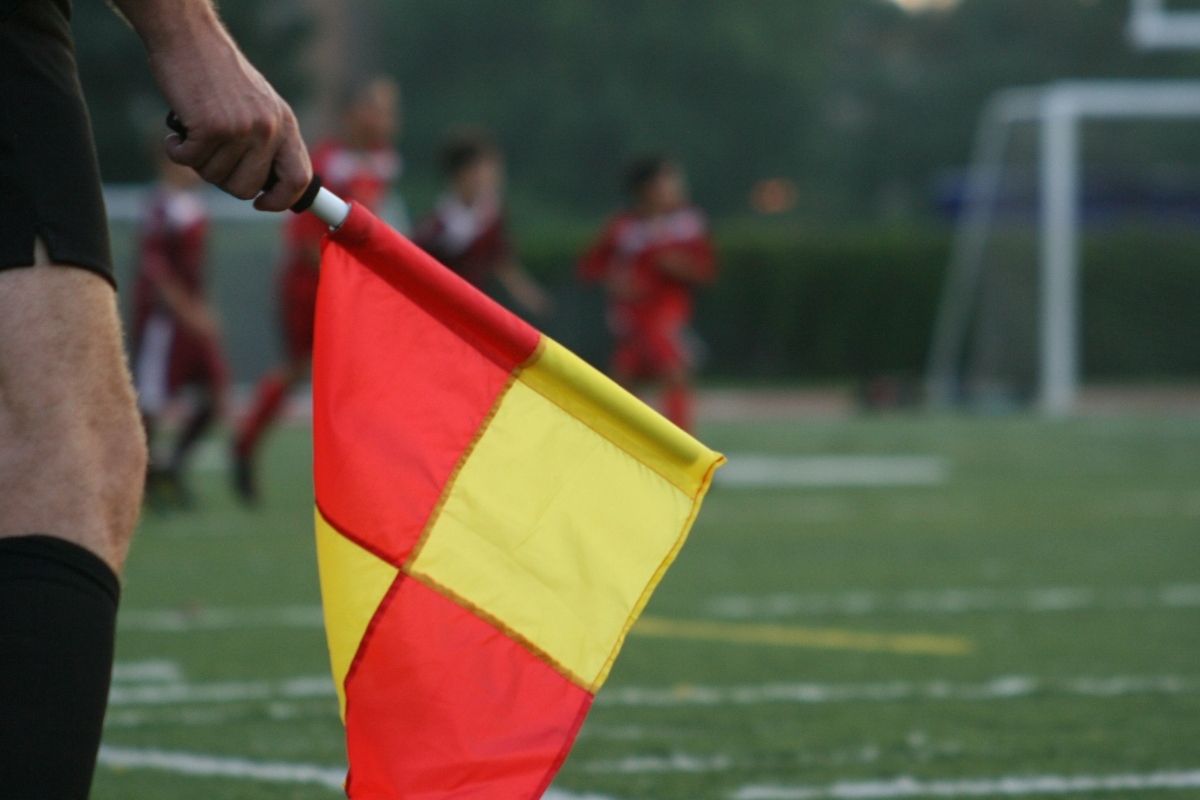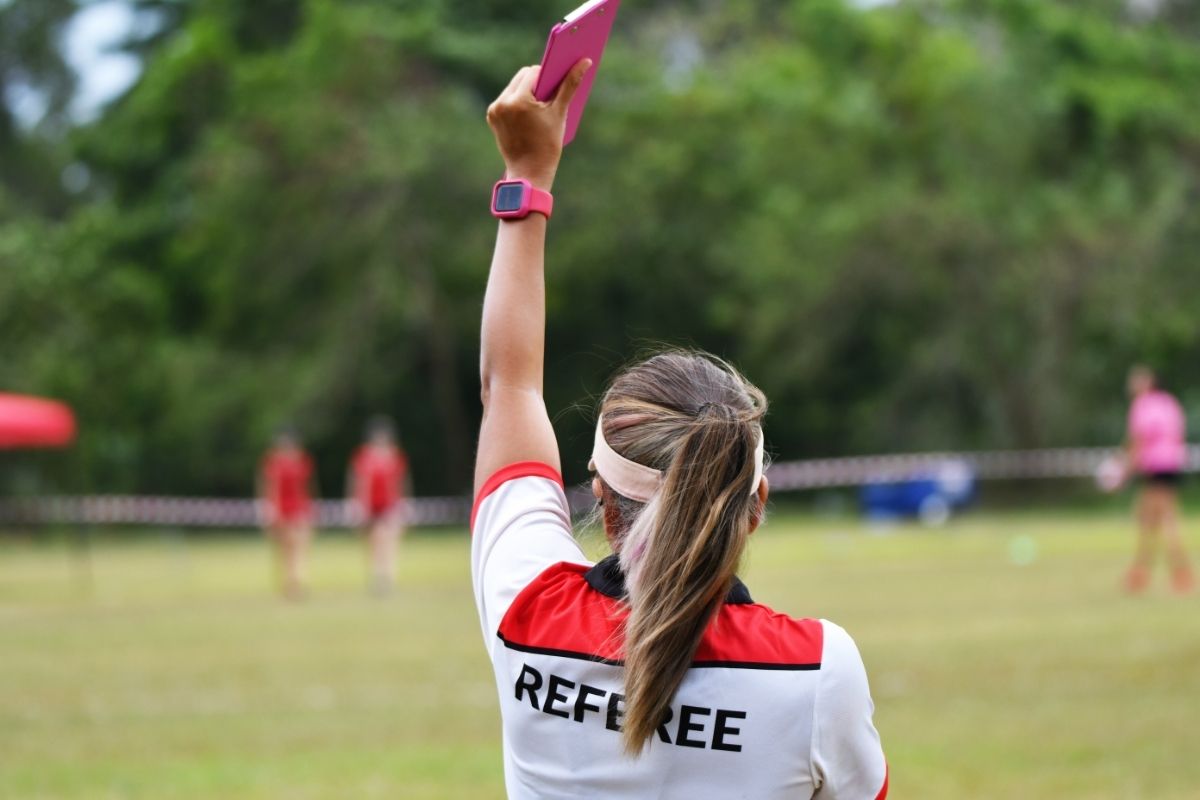If you have ever watched or played soccer you may have heard about the offside rule.


This rule is confusing for many fans and few people fully understand this rule.
In this article, we explain what exactly the offside rule is so that you can watch matches without any confusion and impress others with your new knowledge and understanding of the game.
What Is The Offside Rule
In a soccer match, there are two teams. Each team has a goal at either end of the pitch and they swap sides at the half-time break.
For our example, we will imagine that Team A and Team B are playing a soccer game.
If a player from Team B approaches the Team A goal to make an attack and attempt to score then they must ensure that at least one player, other than the goalie, is in front of them.
Every part of the player’s body is taken into account, from their feet to their hands and head.
The ball must also be ahead of them, closer to the Team A goal line than the Team B player is.
If no players are ahead of them then the player from Team B is offside.
Offside Position
Players are considered to be in an offside position when any part of their body, such as their head, body, or foot, is:
- In the opponent team’s half of the pitch, not including the halfway mark
- Nearer to the opponent team’s touchline than the second-last opponent player and the ball
Not all players are considered, referees solely focus on the position of the potential offside player.
If a player is level with the two last defenders, or player, from the opposite team, they are not offside.
Offside Violation
Players that are in an offside position can also commit violations that are also punishable.
These violations vary but for the most part, they include any players that act intending to intervene with the opponents and the ball, whether they obscure vision, play a close ball or anything that would directly affect an opponent player’s ability to play.
Players that are shouting or making gestures are not seen to be violating the offside rule, however, there are other penalties that a referee can issue as a result of poor sportsmanship or bad behavior during a game.
What Happens Next
Players are penalized for being offside as soon as the soccer ball in play is touched or played by a member of their team.
The only time a player won’t be considered to be offside is if they receive a ball as a result of a corner kick, a throw-in, or a kick-in.
Referees have a difficult job trying to figure out if a player is off-side and this is when the referee will speak with other officials and refer to the Video Assistant Referees for extremely tight calls.
VAR was introduced into most high-level leagues in 2018 and is heavily relied on, especially during final matches or other high-pressure situations.
If a referee deems a player to be offside then the penalty is usually an indirect free kick, which is given to the opposition team, the team that is not offside.
With an indirect free kick, players must pass the ball to another player before an attempt to score a goal is made.
This makes this type of free kick different from a regular free kick, where players can immediately attempt to score.
Active Play


Active play is when a player intentionally and actively tries to interfere with the game play by either touching the ball once it has been passed to them or without touching the ball at all.
In this case, players can be penalized as though they are offside.
An example of active play which would be penalized as an offside position would be if a player prevents an opponent from playing or shooting the ball or if a play purposefully blocks an attempted goal from the opponent team’s goalkeeper’s sight.
If a played ball bounces back to a player and the referee believes that the player has been given an advantage as a result of this, or if the ball has bounced off another player, the referee can deem this as an offside.
Exceptions
There are very few exceptions to the offside rule as it is there to ensure players and games run safely and fairly. The only exceptions are:
- When a ball is played left after a corner, kick-in, or throw-in directly to a player then that player cannot be deemed offside. Offsides would be reset in this instance.
- Sometimes defenders can run off the pitch as a result of their speed and movement, when this happens the referee takes this into account
Resetting Offside
Offside is reset when a defending team gets the ball or is given possession by the referee.
When a reset happens any players that were previously deemed to be offside essentially receive a clean slate and can play on without worrying about getting a heavy penalty.
Understanding the instances when offside may be reset can be confusing to some people but there are several basic rules that the referee would refer to or work within in such cases to support their decision.
These are:
- Accidental deflections won’t result in resetting offside. This can be a difficult call for referees and is often scrutinized when spectators believe a deflection was a deliberate act by a player rather than an accident.
- When a defender makes a clearance to stop a goal no reset will happen. Staying at the goal also stops offside players from getting an advantage.
- Defenders must get the ball before a player from the opposing team in an offside player intervenes.
Final Thoughts
We hope that this guide has answered any questions that you may have had about the offside rule and that you now feel you have more of an understanding of the logic this rule is based on and when it can be used in a game of soccer.
- Can You Play Pickleball on Grass? Tips and Tricks - June 12, 2023
- Do Pickleballs Wear Out? Everything You Need to Know - June 12, 2023
- Can You Play Pickleball on Concrete? A Guide to Playing on Hard Surfaces - June 12, 2023








